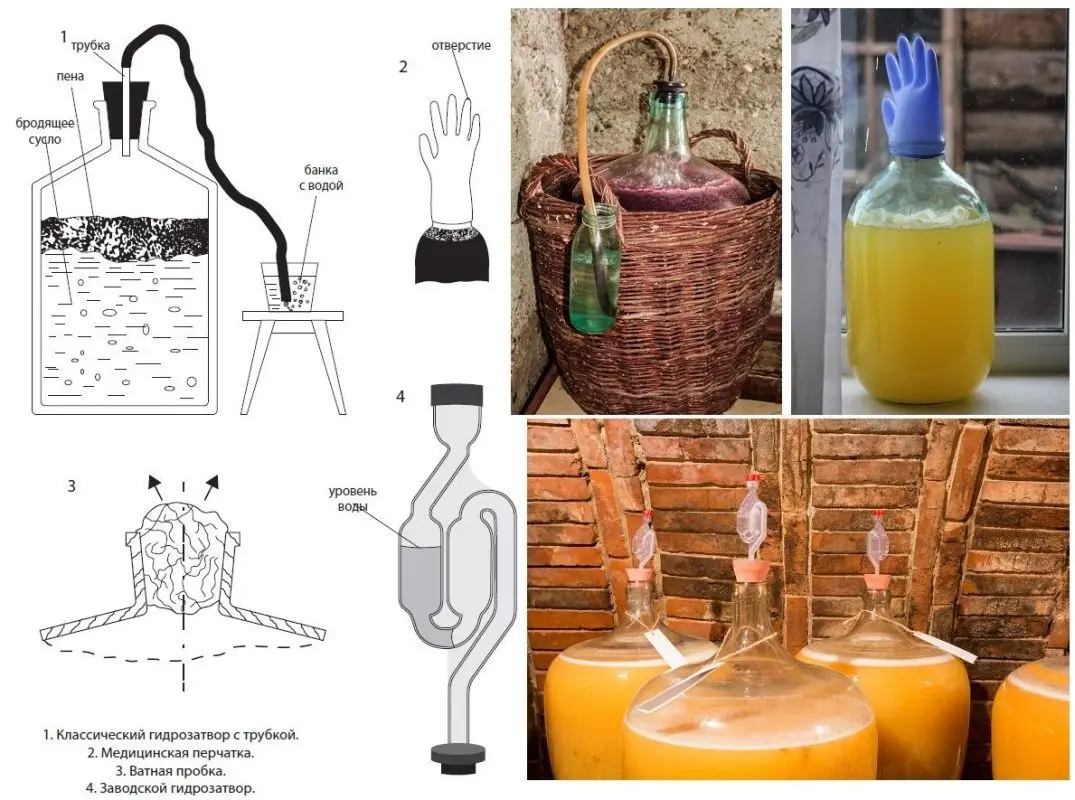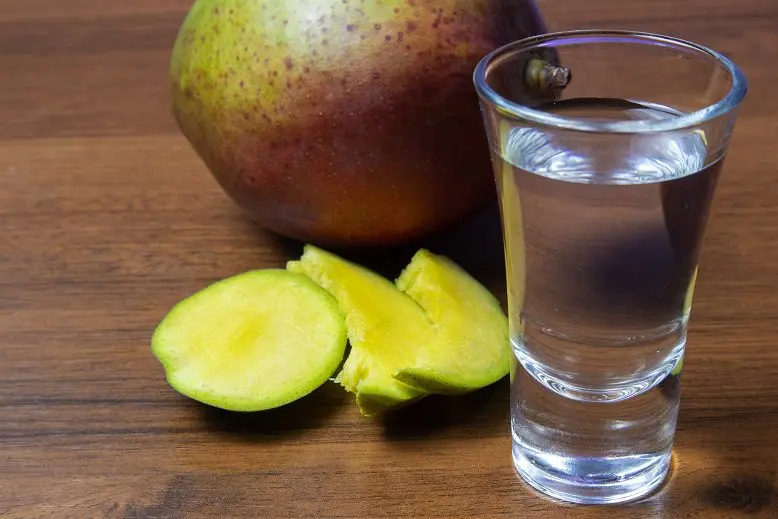Mango moonshine is remembered for its characteristic fruit aroma and mild fruity taste. An exotic drink that you can’t buy in a store. The cooking technology is standard, but due to the fibers of the pulp, it is difficult to filter the mash that has won back. Any, even substandard and overripe fruits, will do. The main thing is that the mangoes are ripe, without rot and mold – even a small piece of spoiled pulp can spoil the entire batch of the drink, so careful rejection of raw materials is required.
Theory
Ripe mangoes contain up to 14-16% sugar, which means that from 1 kg of pulp you can theoretically get up to 176 ml of moonshine with a strength of 40%, the real yield will be 10-15% lower due to losses during distillation.
To increase the yield, you can add fructose or beet sugar – 1 kg additionally gives 1,1-1,2 liters of moonshine 40%. But the addition of sugar or fructose partially neutralizes the flavor of the mango, so a compromise is needed between quantity and quality. If there is a lot of raw materials, it is better not to add sugar.
The highest quality of mango mash will be on wine yeast or raisin sourdough, but the fermentation period is up to 50 days. In this case, one cannot rely on wild yeast living on the surface of the fruit, since the mango peel is treated with preservatives before transportation. On alcohol, dry or pressed baker’s yeast, mash will win back in 4-10 days, but instead of mango, a characteristic alcohol smell will appear, so it is better to take wine yeast for such exotic raw materials.
It should be borne in mind that a significant part of the weight of a mango falls on the bone, usually after removing the stone and peel from 5 kg of raw materials, about 3 kg of pulp remains with a maximum theoretical yield of 530 ml of moonshine (40% vol.).
Ingredients:
- mango – 5 kg;
- sugar – 0,5-1 kg (optional);
- water – 2 liters + 1 liter for each kilogram of sugar;
- wine yeast or sourdough – for 5-6 liters of must.
Mango brew recipe
1. Wash the fruits with warm running water, cut off the peel (contains preservatives that will interfere with fermentation), remove the stone.
2. Pass the pulp through a meat grinder or blender (in extreme cases, knead with your hands) to get a homogeneous mass of liquid consistency.
3. Pour the mango must into the fermentation tank. Add sugar (optional) and water. Stir until sugar dissolves. The amount of liquid should not exceed 75% of the volume to leave room for gas and foam. Add wine yeast according to the instructions on the bag or a pre-prepared sourdough.
4. Close the container with a water seal of any design. Even a medical glove with a hole in one of the fingers will do (pierce with a needle). Transfer the mango mash to a dark room with a stable temperature of 20-28 °C. Leave until the end of fermentation.

Attention! For the first few days, pulp will collect on the surface – a “cap” of pulp, which is desirable to mix. After 3-7 days of fermentation, the pulp will sink to the bottom.
Depending on the selected yeast, temperature and sugar content, mango mash ferments 4-50 days. The readiness is indicated by the absence of gas from the water seal (deflated glove), the appearance of sediment at the bottom and the bitter taste of mash without notes of sweetness.
Obtaining moonshine from mango
5. Strain the mash that has won back through 1-2 layers of gauze to remove the pulp, which can burn during distillation.
Attention! Due to the fibrous structure of the pulp, mango mash is very poorly filtered. The thick must be squeezed dry with your hands or a press.
6. Make the first distillation at maximum speed without separation of fractions. Select the product until the strength falls below 14-16% in the stream.
7. Measure the strength of the resulting moonshine, then determine the amount of pure alcohol – multiply the percentage strength by the volume in liters and divide by 100.
8. Dilute the mango moonshine to a strength of 18-20% and overtake again. Collect the first 10-12% of pure alcohol separately. This faction is called the “head” and can only be used for technical purposes.
9. Collect the product (“body”) until the strength in the jet drops below 40%, after which you can finish the distillation or select (“tails”) in a separate container.
10. Dilute the resulting “body” of moonshine from mango with water to a drinking strength of 40-45%, pour into glass containers for storage and seal tightly. Before tasting, leave in a dark, cool room for at least 3-4 days to stabilize the taste.










